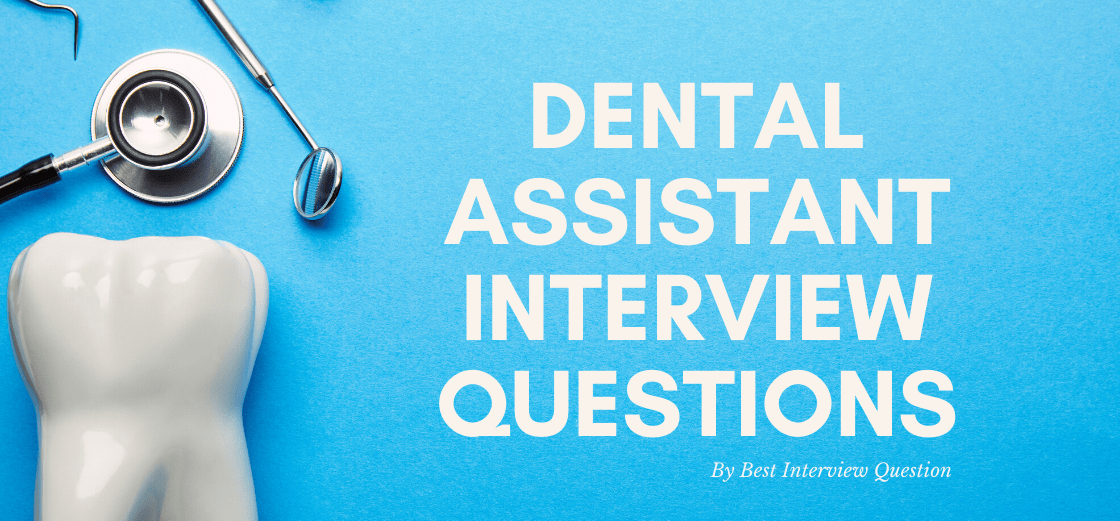Dental Assistant Interview Questions and Answers

Being a dental assistant is the utmost challenging job in the medical industry. On the other hand, it is also the most valuable job which comes with huge responsibilities; thus, it involves the stringent interview process. So it is recommended to get prepared with the frequently asked dental assistant interview questions. However, there will be questions specific to the respective dental office.
It requires a strong dedication to crack the interview for dental assistants. Below we are listing the dental assistant interview questions and answers, which might help you in achieving your dream job. While answering, kindly ensure to keep eye contact with your dentist or interviewer; this shows your interest and determination in this position.
Most Frequently Asked Dental Assistant Interview Questions
Here in this article, we will be listing frequently asked Dental Assistant Interview Questions and Answers with the belief that they will be helpful for you to gain higher marks. Also, to let you know that this article has been written under the guidance of industry professionals and covered all the current competencies.
As you can see in today’s day to day life, requirements of dental care increases. Thus, it increases the scope of dental assistants. On the other hand, this role provides job security. No dentist can run his clinic without the help of a dental assistant, and this is what everyone is looking for, I think.
If you have already worked in this field, then share your experience in terms of durations and responsibilities.
If you are a fresher for this dental assistant position, then you can share your internship details or any courses you have taken to get into this profile.
- Dental assistant plays an essential role in keeping people healthy.
- They take and develop X-rays of the patient and prepare them for their dental examination.
- They provide chairside support to the patients
- Also, provide all the dental hygiene details to the patients.
- Interpersonal skills
- Good listener
- Accurate, organized and productive
- Proficiency in work
- Regulatory skills
- Passionate
Classes are categorized depending on their site and size:
Class I: In this cavity affecting the pit and fissure on buccal and vocal surfaces of molars and premolars.
Class II: In this cavity affects the adjacent surfaces of molars and premolars.
Class III: In this cavity affects the adjacent surfaces of laterals and cuspids.
Class IV: In this cavity affects the adjacent surfaces, which include the incisal corners of the anterior teeth.
Class V: In this cavity affects one-third of the facial and lingual surfaces.
Class VI: In this cavity affecting the angular tips of molas, premolars, and cuspids.
In such a scenario, I would be doing the following things:
- Never argue with a patient.
- I will apologize for this time and assure better service in the future.
Healthy oral hygiene includes more than brushing. To keep your oral hygiene maintained for the long term, there are a few steps that everyone should follow:
- Understanding of the needs of oral health by talking to the dentist.
- Schedule regular checkups suggested by the dentist
- Use of fluoride, it prevents tooth decay
- Brush and floss your teeth daily
The dental clinic uses many applications to keep track of its customers, billing procedures, and other details. So keep in mind that the dental assistant should have detailed knowledge of basic computer applications such as Microsoft Office, as all these things can be organized in spreadsheets and MS Word.
It is recommended that you say that you are a quick learner in learning new computer applications.
HIPPA stands for the Health Insurance Portability and Accountability Act of 1996. The agenda of this act is to conduct inefficiencies in the industry.
Purpose of HIPPA
- Scale down the healthcare fraud
- Provides security and privacy of the health-related information
- Accomplished the standards of health information
MO means Mesial-occlusal; it is generally used to define the surfaces of a tooth that needs treatment or filling. The material used for filling the tooth is Amalgam.
First of all, note down the necessary details of the patient and the problem. Then adjust the seat for the patient and put up the aprons. Arrange pieces of equipment ready for the doctor and the medicines. If required, the dental assistant should take and note the blood pressure of the patient.
- Wear gloves and goggles, also the apron as part of the PPE kit.
- Equipment should be washed and sanitized after each use. This is a good practice to control infection.
It is strongly suggested to read about the HIPPA protocol before going to an interview in the dental assistant profile. It plays an essential role in the jobs in the medical industry.
The primary thing which needs to be considered is the patient’s privacy. Whenever calling your patient, make sure to call with their first name instead of their full name. When performing any examination on the patient’s mouth or doing a discussion related to health, make sure the room is closed, or no one is around.
